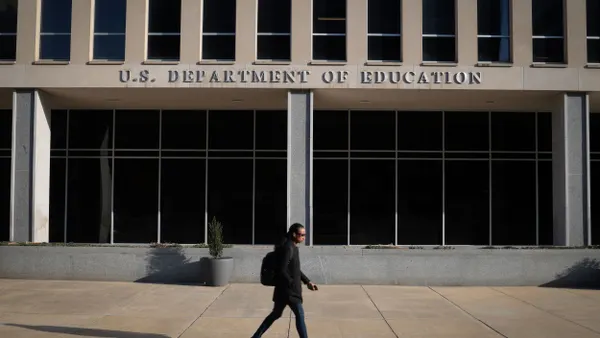Dive Brief:
- Educational consultant David J. Ferrero writes for Education Week that teachers trying to keep up with changing standards can fall into the trap of resorting to “piecemeal shoehorning of content,” a practice that's ultimately not very effective.
- Instead, educators should be asking what to remove from the curriculum to make learning more effective overall.
- Ferrero believes a single organization like the Convergence Center for Policy Resolution should craft a report, making new suggestions for curriculum that address state and federal needs on what to cut and what to keep to ensure students have what they need for their future.
Dive Insight:
It’s understandable today that with standards swirling overhead and limited time to cover all the bases, teachers feel a need to check even more content boxes before the end of the school year. But perhaps district curriculum leaders are cramming too much material into classes, expecting a lot not just from teachers but from the students themselves.
Instead, administrators and educators both may want to consider being “content curators,” notes faculty advisor Nicki Monahan in a 2015 post. Considering what is the most effective material and helping students understand why they’re being taught the information, rather than just telling them to just learn it, are also key. Giving lectures on material to ensure it’s covered can have a negative effect on retention, according to a 2014 study about active learning, noting that “average failure rates were 21.8% under active learning but 33.8% under traditional lecturing.”
The goal for educators and curriculum instructors is to make sure they make the most of the time they have with students each year while seeing that students learn what’s needed. Perhaps instead of thinking of teaching as an all-you-can-eat smorgasbord, districts should think of curriculum as a carefully crafted meal, where each bite informs and enhances the next.










